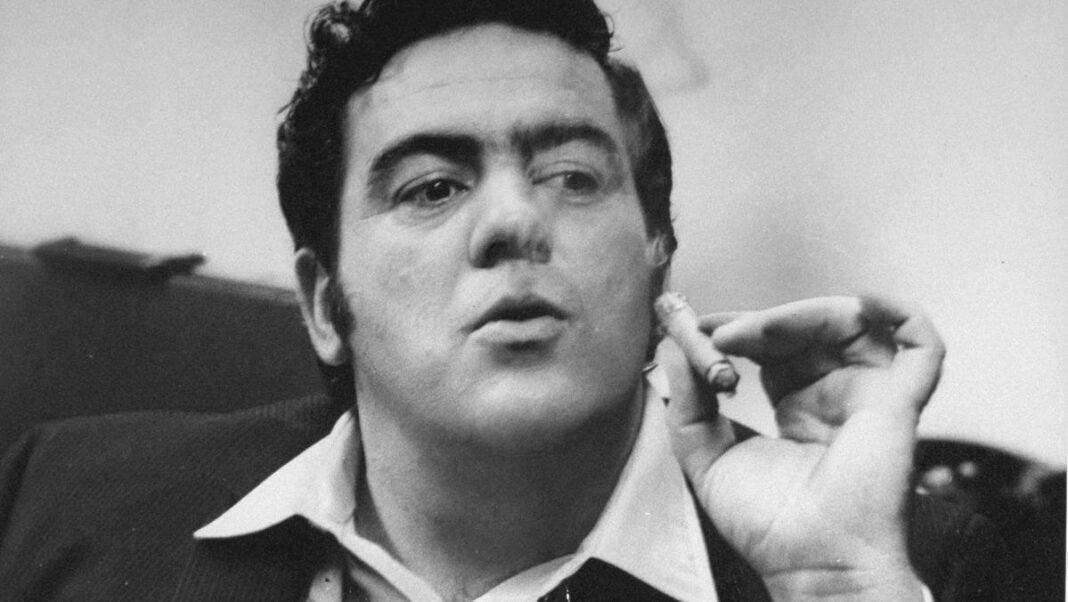A Patriotic True Crime Biography Showcasing the Iconic Journalist Jimmy Breslin
Author Richard Esposito brings the legendary journalist to life through a true crime lens, covering topics from the JFK assassination to the Son of Sam killings.
Jimmy Breslin was larger than life in many ways. As a powerful figure in both New York and American journalism, he had a network of connections that spanned nearly a century, involving politicians, gangsters, and law enforcement.
Breslin was known for his gigantic ego, a sense of humor that outshined many, and a distinctive appearance marked by a large head often crowned with wild, black Irish hair and frequently enveloped in cigar smoke.
One evening in 1970, this notorious newsman was found in a bar called The Suite, receiving a beating from Jimmy “The Gent” Burke, a mob associate later portrayed by Robert DeNiro in Scorsese’s film, *Goodfellas*.
A Captivating Take on True Crime
In Richard Esposito’s Jimmy Breslin: The Man Who Told The Truth (Crime Ink, 360 pages), it’s reported that Breslin struck the bar with such force that witnesses weren’t sure if he left with just a concussion or a fracture.
The reason behind this altercation has been clouded by memories of beer and whiskey. Regardless of the incident, there were no police involved, nor were there any complaints filed to the authorities—either at City Hall or among mob circles. The whole incident remained, in a way, a family matter.
The book by Esposito presents a lively, engaging, and somewhat patriotic journey through Breslin’s various true crime escapades, covering everything from Burke’s $5 million heist at JFK airport (equating to about $28 million today) to the Watergate scandal, the notorious Son of Sam murders (where the killer sent chilling letters to Breslin), and the controversies surrounding sexual abuse within the Catholic Church.
During the “City for Sale” corruption case in the 1980s, Breslin unearthed that many of his acquaintances were involved. He took them to task.
He stated, “This is the scandal of our times, and from now on I will bring it to you first and with the most fury because I am personally aroused. I’ve been betrayed on my own Boulevard.”
You might consider that time of crime and comedy to be a bygone era, yet it remains relevant today, albeit with fewer journalists possessing the discretion and skill to expose the unvarnished truth.
How was the beating by Burke deemed a family issue? Well, a decade after the incident, Breslin found himself called to a dark street corner. There was Burke, holding a paper bag containing $35,000 in cash—a significant amount then and even more substantial now.
At the time, Breslin’s first wife, Rosemary, was battling breast cancer, and Burke, believing that corruption plagued all spheres, offered to bribe her doctors to save the mother of six.
“You don’t need to worry about paying me back,” said the man connected to numerous homicides. “I just want to see her healed.”
Breslin is well-regarded for his thorough and nuanced reporting on the assassination of President John F. Kennedy, as well as for his conversation with JFK’s undertaker. He also had an almost uncanny ability to be present at the assassinations of Senator Robert F. Kennedy and Malcolm X. Fueled by his passion for poetry and a strong sense of justice, he covered the most significant events of his time.
That’s the essence of it.
However, as Richard Esposito illustrates, the core principle is straightforward yet hard to grasp: Engage with reality, document it, and persist – even when faced with extreme challenges.

